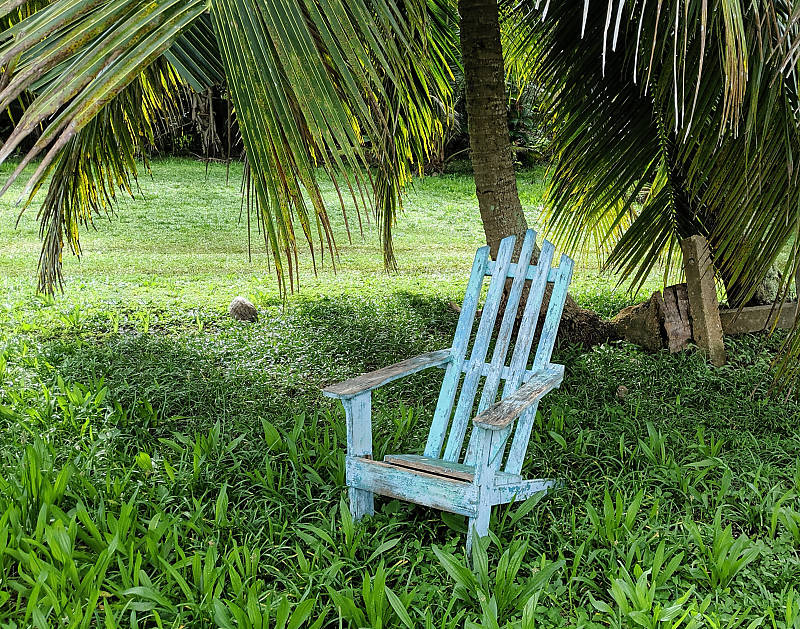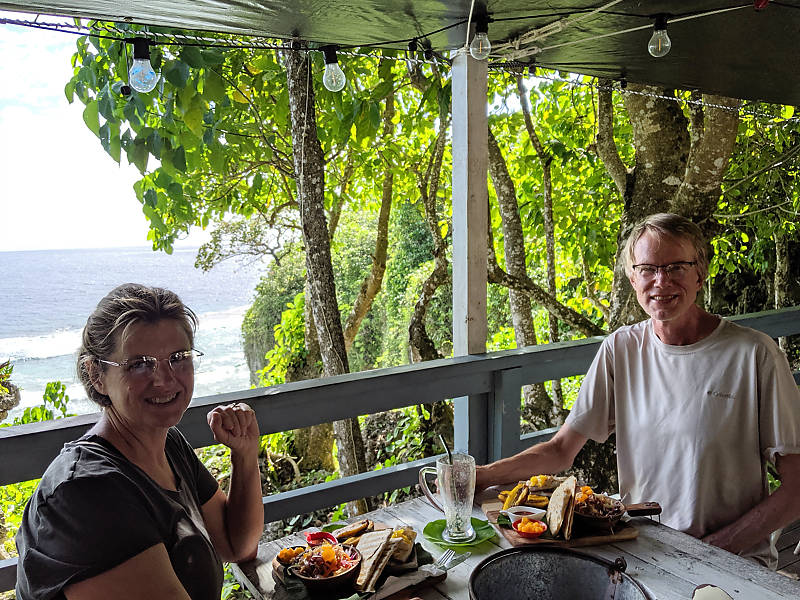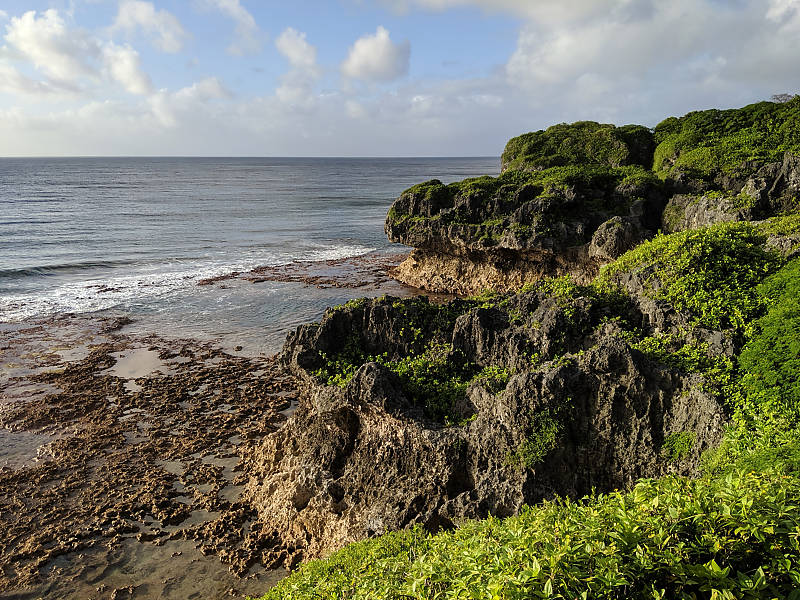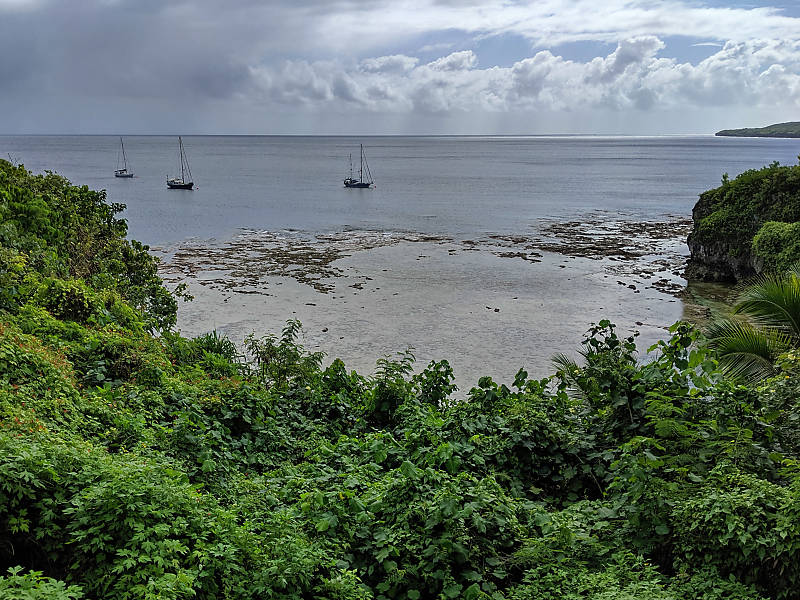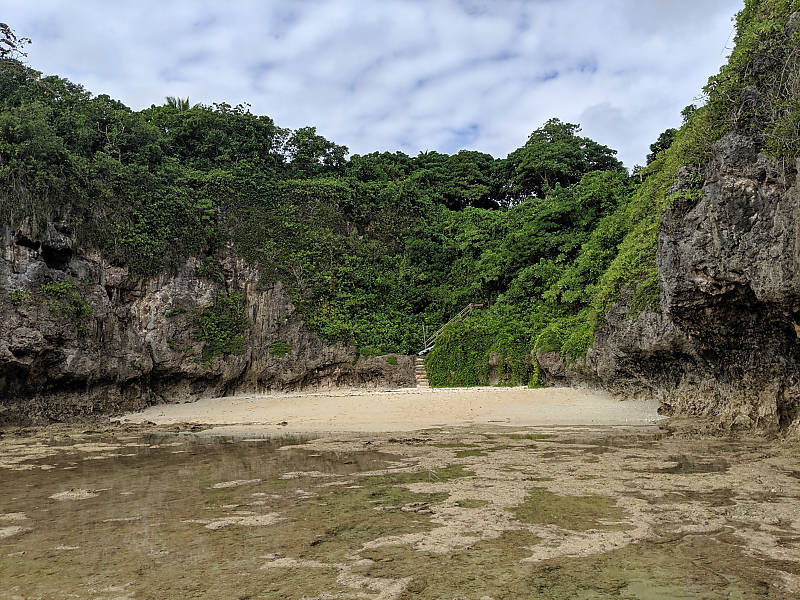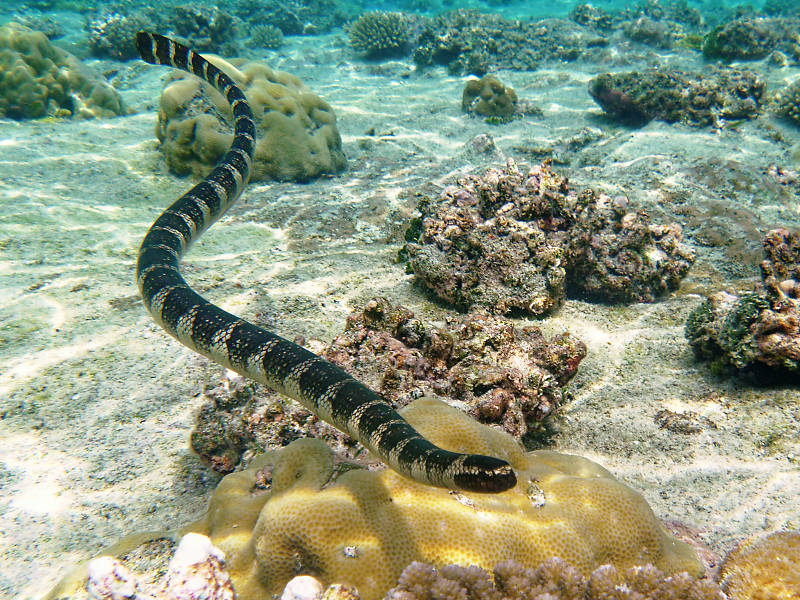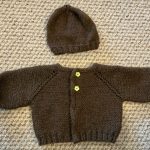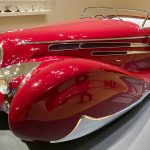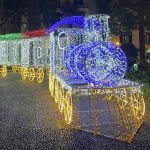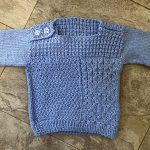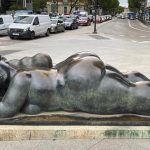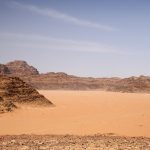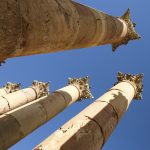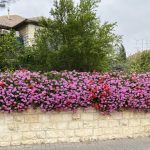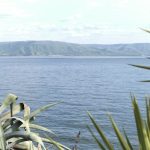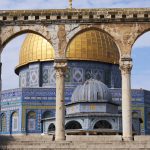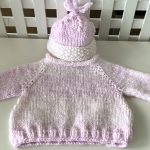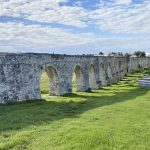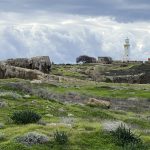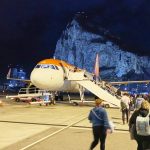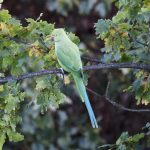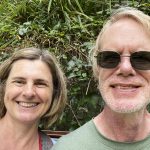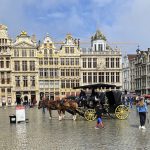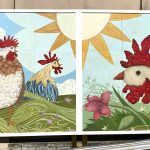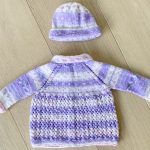Sea snake? Yes, see snake! (groan)
So we have finished our time on Niue, where we spent a month “lost” on a small coral island in the middle of the South Pacific. Niue is an 11 mile (18km) wide island roughly 3000 miles (4500KM) SSW of Hawaii. It is a small nation of about 1600 people. It is one of the largest coral islands in the world, and is surrounded by coral reefs on most sides.
Niue (pronounced “new-way”) can be reached by plane from New Zealand with flights twice a week. It is on the other side of the international date line, so we had the interesting experience of leaving Auckland on Tuesday, July the 2nd, at 9am, and arriving at Niue at 1pm on Monday the previous day! Niue is pretty quiet as expected- not a single traffic light anywhere in the nation, although there are a few stop signs. 5 or 6 cars in a row can be considered rush hour. Phones use a 4 digit number, except for cell phones which use a 1 digit prefix first. License plates are also 4 digits. Niue is one of the few countries that our Google Fi cell phone plan doesn’t work, so we were limited to occasional access to the internet.
The picture above is one of the many sea snakes we saw snorkeling on the island. They are rather indifferent towards people, and aren’t shy at all. Tim actually had one swim into his forehead while snorkeling one day! They are highly poisonous, but fortunately almost never bite. They either seemed to take no interest in us, or they would swim towards us just to check us out. Deb never did feel comfortable around them, but Tim didn’t mind them unless he was startled by one.

Our first couple of weeks we stayed in a large one bedroom house with full wrap-around porch. A couple of days into our stay, the “house” cat stopped by to visit. Checking on the guest log showed that she was named Push Push. We picked up some food for her the next day, and she then introduced us to her three kittens. The kittens were very shy at first, but after a week or so they would let us pet them while they ate. They were a nomadic bunch- they would disappear for a few days, then show up again and ask for food.
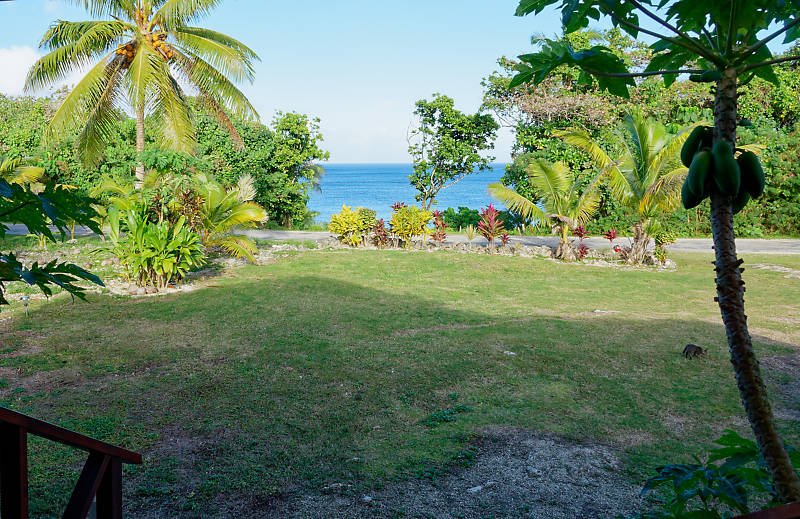
View from our deck, note the papayas on the right
Speaking of food, we found the the island to be fairly limited as expected. There was one large supermarket, and a couple of much smaller ones. But the re-supply cargo ship only stops by every two or three months, so choice is limited. We heard they had small local markets a couple times a week in town, but when we checked them out there wasn’t as much in the way of fresh food as we had hoped. Some folks do sell baked goods or other homemade treats. Deb purchased a couple of coffees from a local at 8 dollars New Zealand, or 5 US dollars apiece. For this, we got instant coffee added to hot water! Definitely doing our own coffee from now on. We did pick up a few vegetables to try- taro, kumara, sweet potato, and breadfruit. Not big fans of taro, but the sweet potato and kumara were nice. The breadfruit sat for a few days before we got to it, and unfortunately went bad before we could try it.
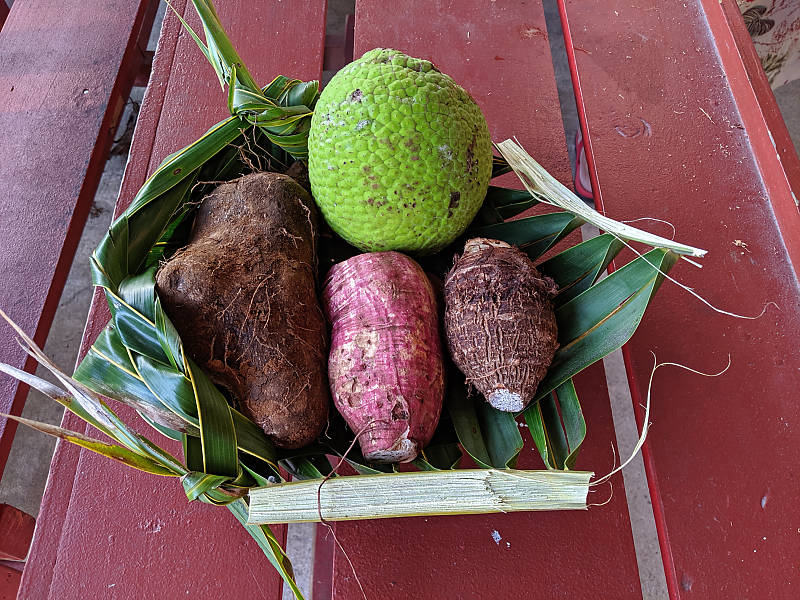
So our main food resource was the local grocery store. The store has a large Uga coconut crab in front of it. It’s also located next to the lawn bowling club of Niue, where Deb and I had a chance to practice our lawn bowling one weekend.
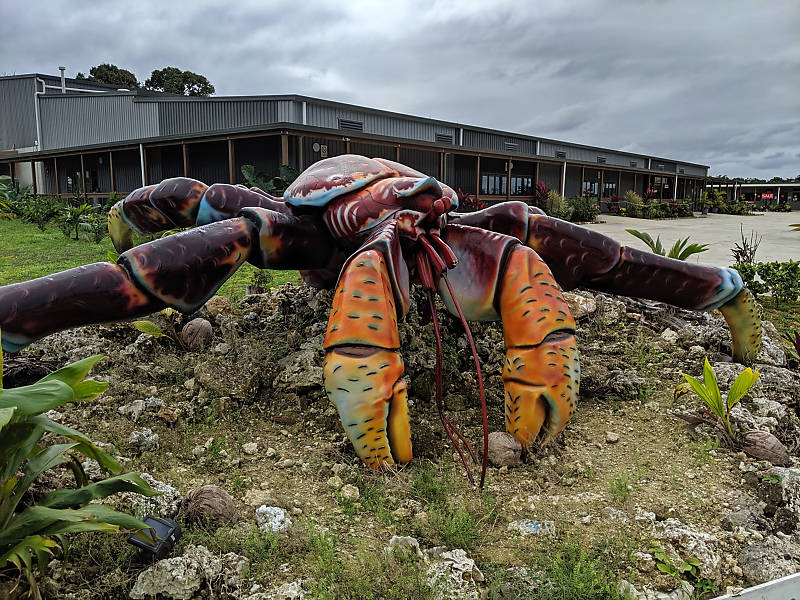
We did much of our own cooking, but did sample a variety of the restaurants. Again, limited choice for food, but the fresh fish was delicious. One night we went out with a couple we had met earlier on the island. We headed to the south side of the island to a place called the Washaway bar. Only open on Sundays, it’s a very casual affair, with an honor system for drinks and food. Just write down what you have by your name in a notebook, and at the end of the night they’ll add it up for you.
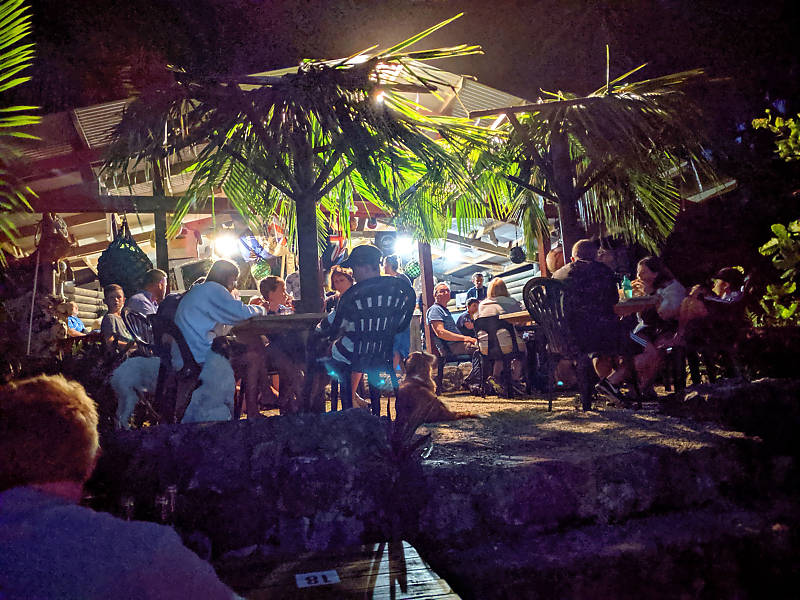
The cafe is on the edge of the ocean (In Niue, almost everything is!) so you get a great view to go with your food. Another of the small cafes has an 18 hole miniature golf course, which we didn’t try to play. The course looked well worn, but the views from the course were quite impressive.
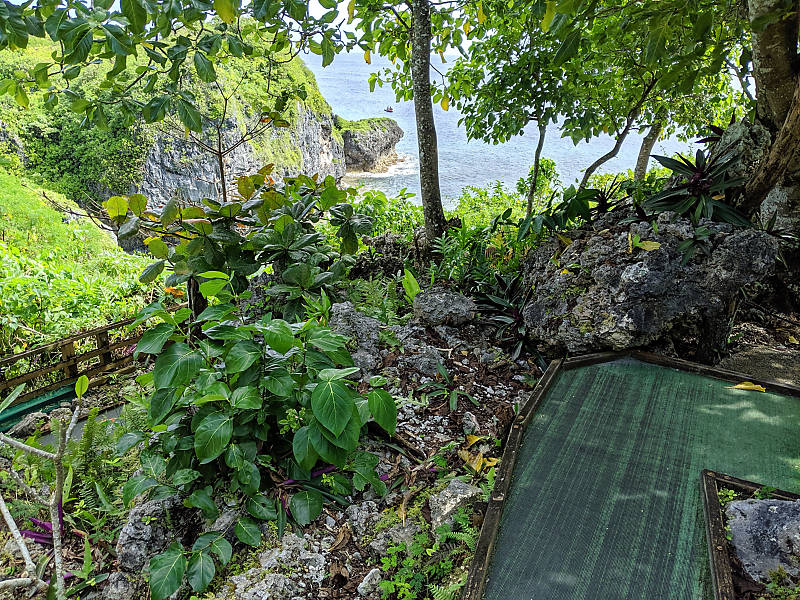
Speaking of views, here’s Limu pool. We snorkeled here a few times, there was so much to see. The coral and limestone of Niue makes for an interesting coastline, as ocean and rainwater erode the stone, forming caves, arches, and other interesting formations.
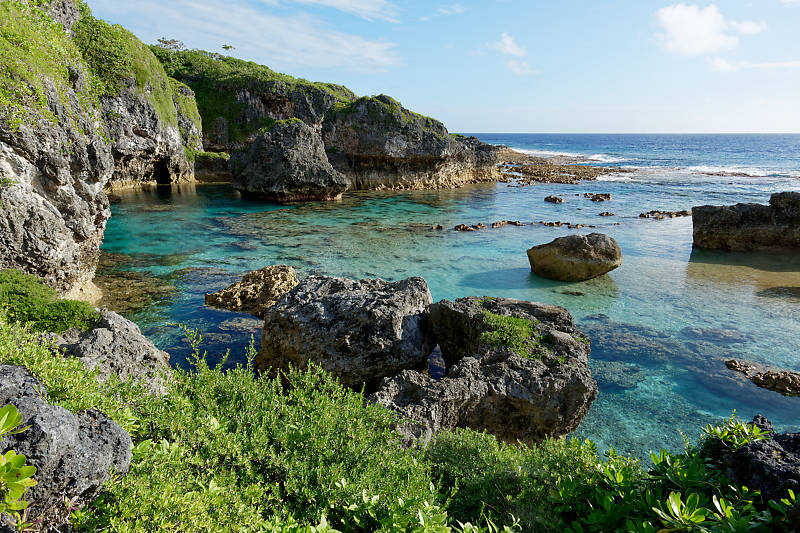
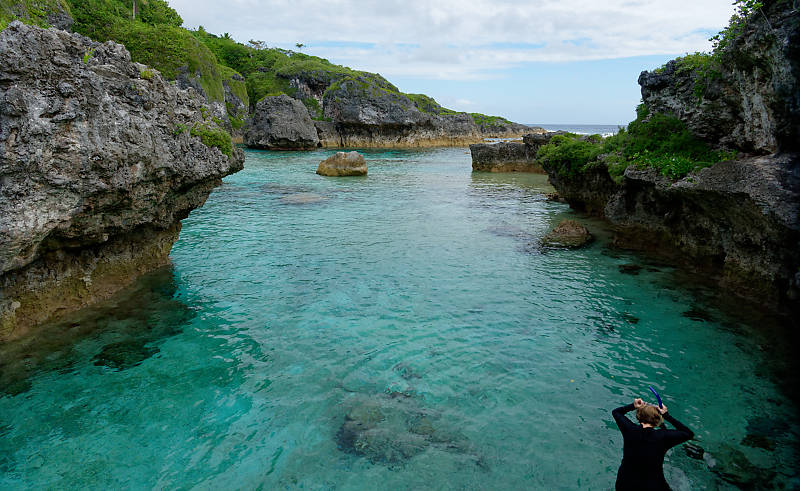
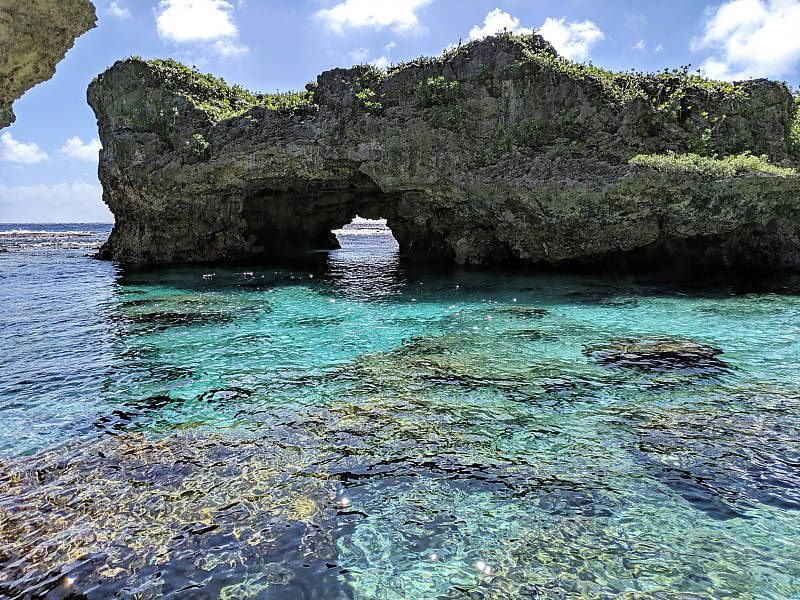
Lots to see underwater too, and I had an older waterproof camera that I decided to try out. It didn’t work great for underwater pics, but I took enough that a fair number of them turned out.
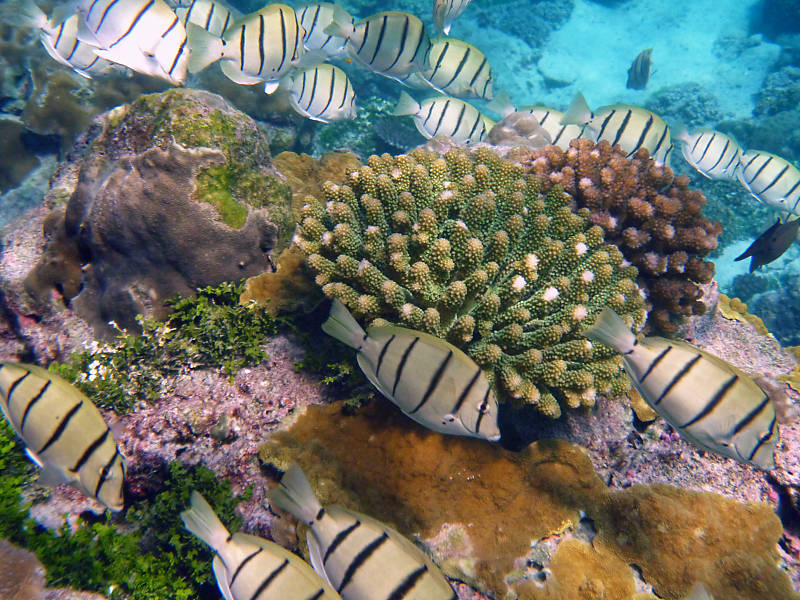
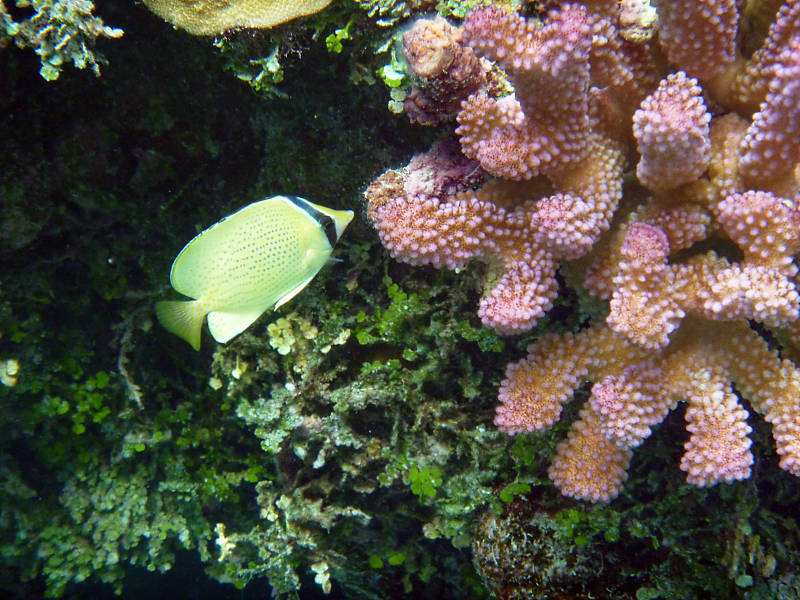
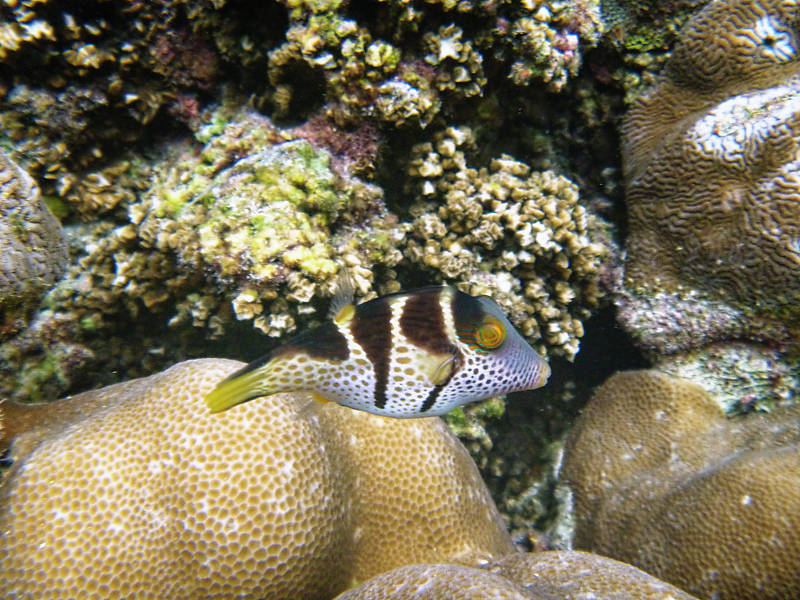
Sometimes we would run into clouds of fish, and just snorkel along with them.
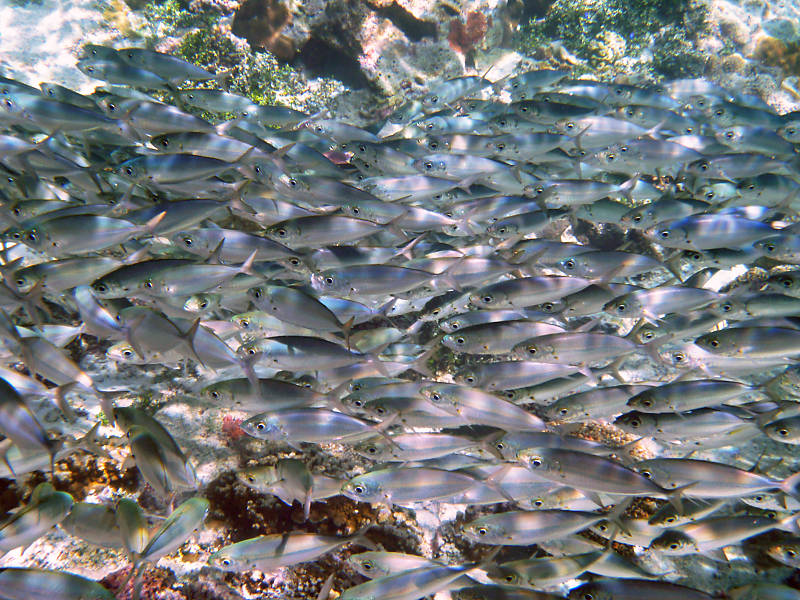
We also saw large pipefish along the bottom. There were also small pipefish near the surface, but you have to look up to catch them. They are often around, but you don’t notice them unless you look for them.
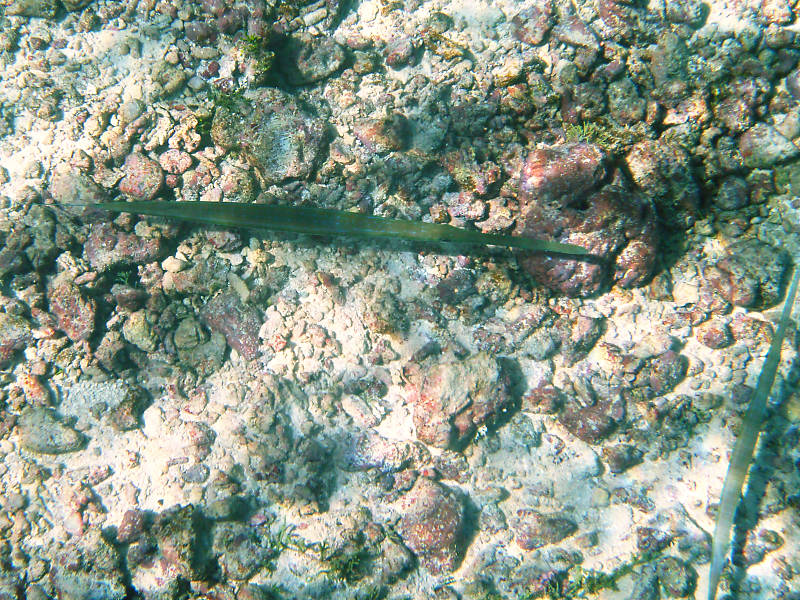
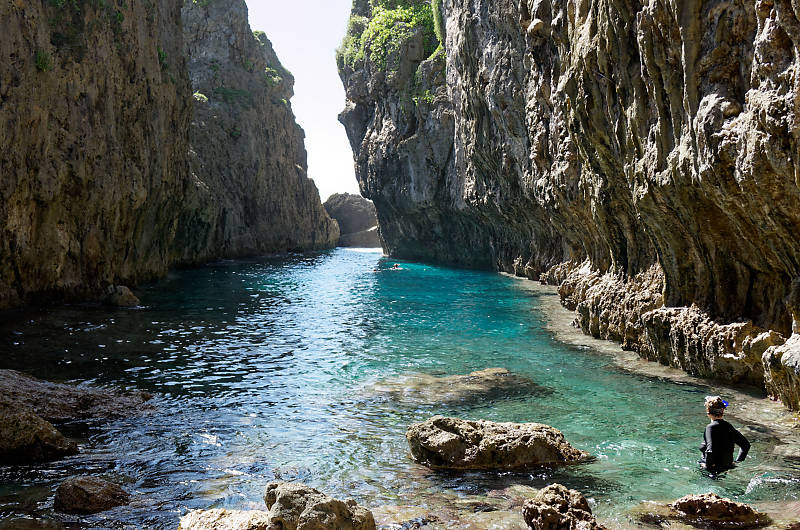
Matapa chasm was another fun swimming hole. This one is a little deeper, but with the same aqua blue waters found elsewhere on the island. When we first got there it was crowded- almost a dozen people! But it soon thinned out and we had the place nearly to ourselves.
There are also some nice land based walks on Niue. Palaha caves was very impressive.
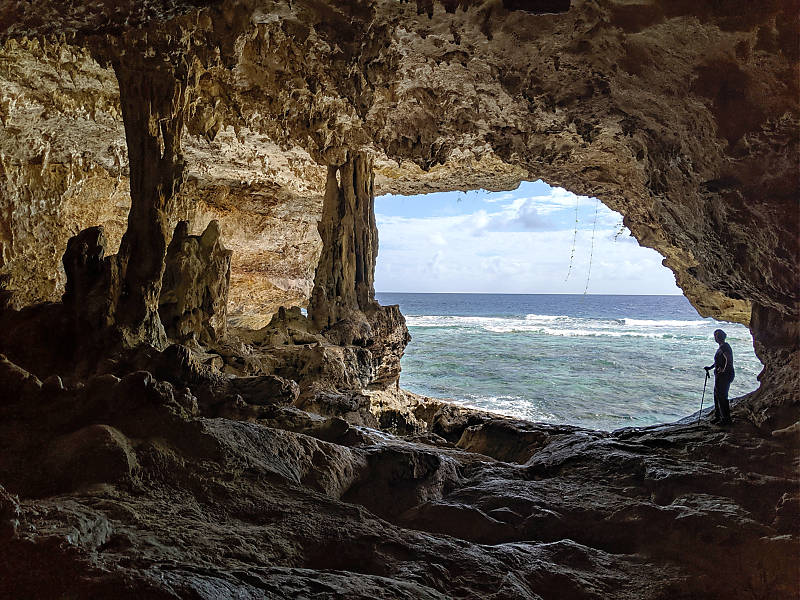
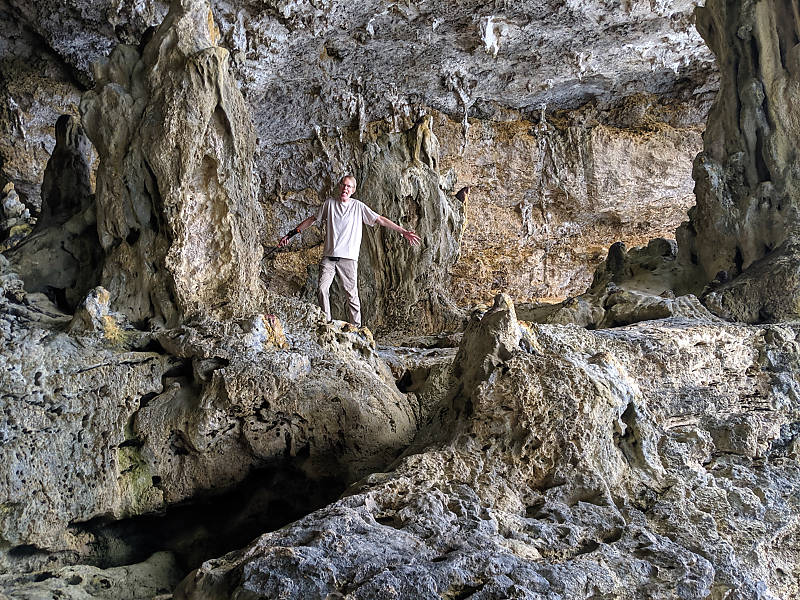
Tim going a little “cave crazy”
Avaiki caves combines caves with swimming. According to legend, only the King of Niue was allowed to bathe in it. The swimming area is entered through a coral cave.
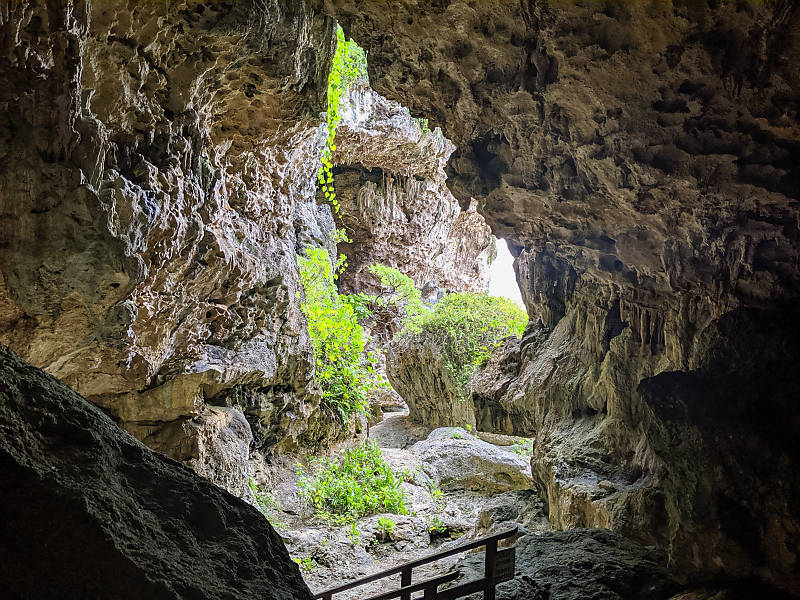
This exits to the reef, where it is a short walk to the Avaiki cave entrance.
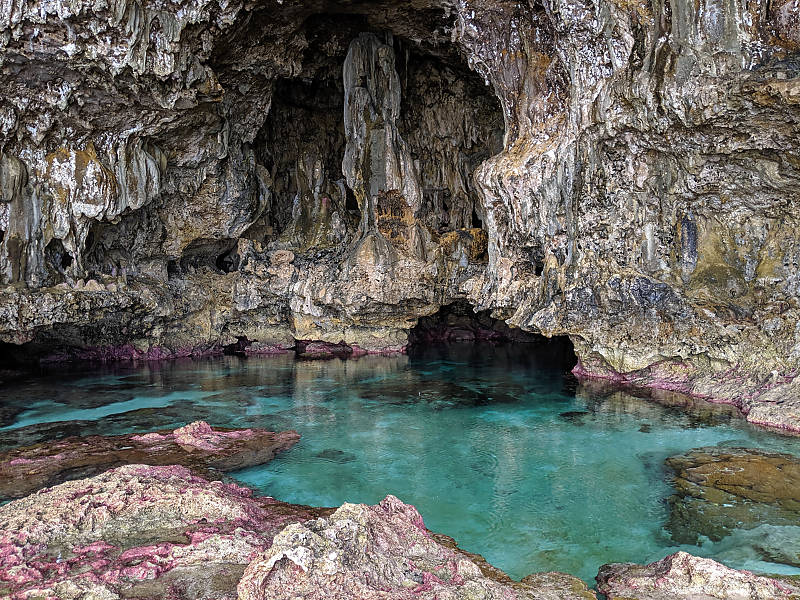
There is a second cave through the tunnel straight ahead, that also leads out back to the ocean. Not many fish in here, but very peaceful and beautiful swimming. On the picture below, notice Deb to the right.
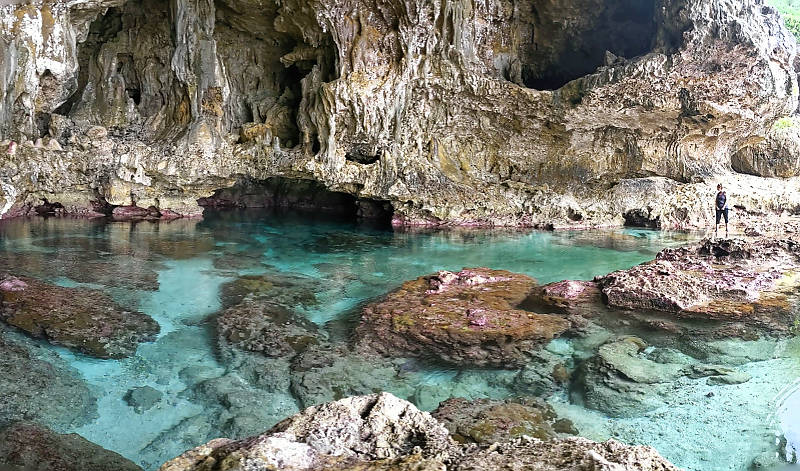
Getting back to our first house, we were enjoying watching the kittens as they played on deck, or attacked moths drawn by our lights at night. We didn’t have air conditioning anywhere on Niue that I recall. But temperatures were usually pretty nice, although a few days were too hot for us. A couple hours of snorkeling always helped cool us off.
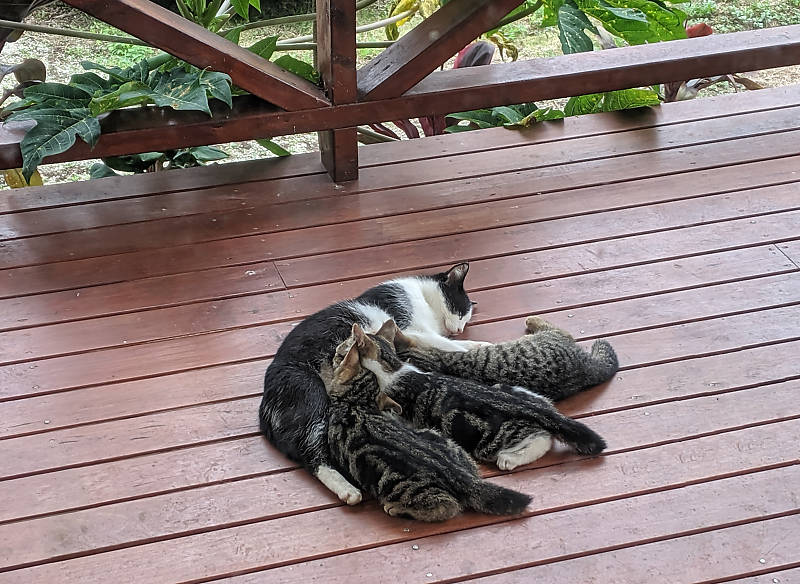
Lunchtime on the deck. Aside from the cat and kittens, we had lots of chickens. They run wild on the island, and are very noisy creatures. We heard roosters crowing from a couple hours before dawn to a few hours after sunset every day. They also stop up on the deck to see if they can steal the cat food we set out, and attack any low lying papayas. Given a day or two they will hollow out a ripe papaya down to the shell. The pic below shows one off the deck they were working on.
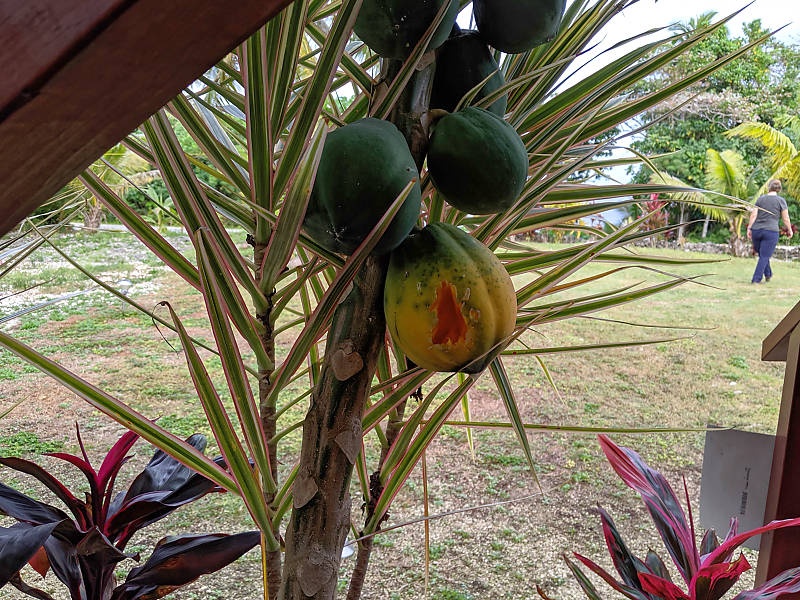
We also had numerous coconut trees, and found a machete in the back shed so tried harvesting a coconut. We managed okay considering we have no idea what we are doing. I guess we are supposed to husk the coconut first, but getting that hard husk off was more than we could manage with a dull machete. Finally managed to whack it open, and coconut meat was very tasty.
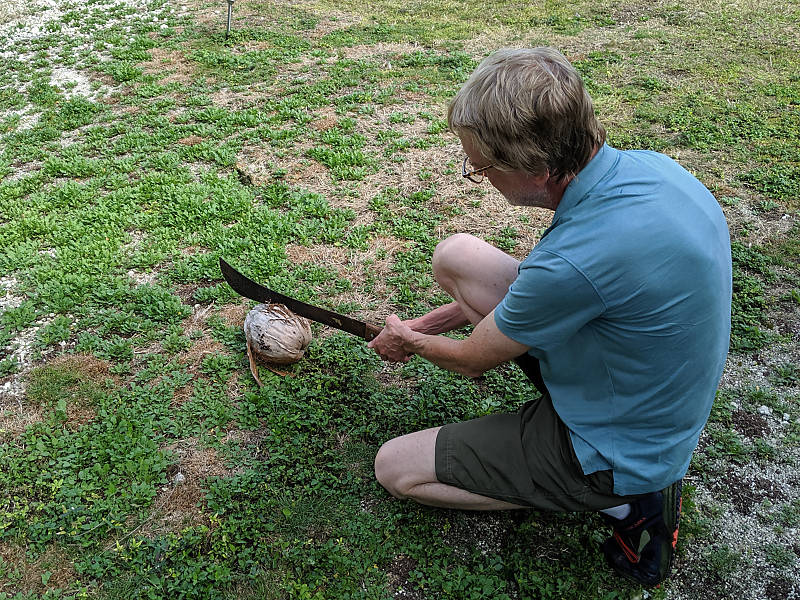
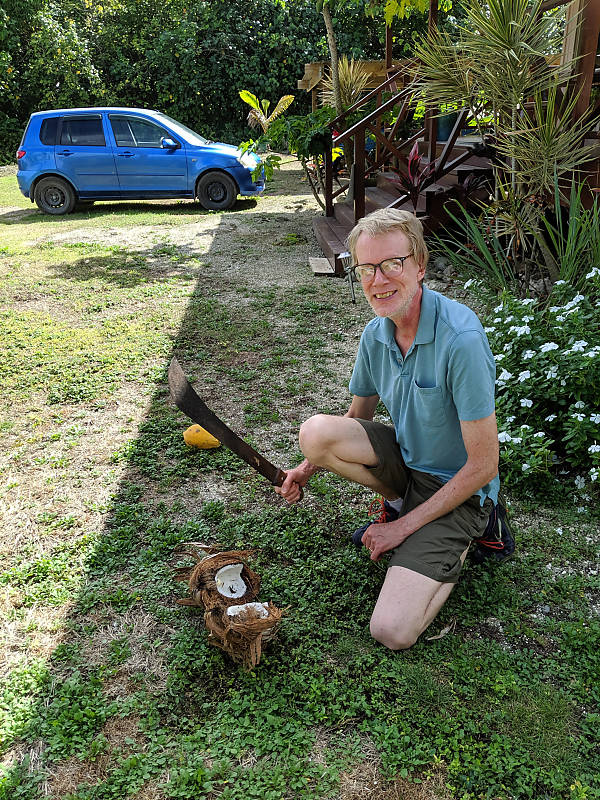
By the way, first rule of the island from the rental car company- never park under a coconut tree. The couple we had dinner with at the Washaway cafe said that someone at their place had ignored this rule, and they ended up with a coconut through the front windscreen of their car.
Speaking of cars, ours was a little old and run down, but it’s not like we were going far. The battery was fairly weak, and was running down over the course of the month. I stopped into the rental place to see if they could do something about it, and explained my concern about getting stranded on a corner of the island with a dead battery. Went back and forth a while, but the short version of the story is that “the car must be fine, since it’s starting.” So we lived with it, and it did manage to survive the whole month. By the way, the process of dropping the car off at the airport? Park it anywhere at the airport, leave it unlocked with the keys in it. Good to go.
On to the Talava Arches. Best at low tide, with a roughly half hour walk through the jungle to get to the arches. The limestone and coral can make for challenging footing, but mostly its just hot waking, although it’s in the shade most of the way.
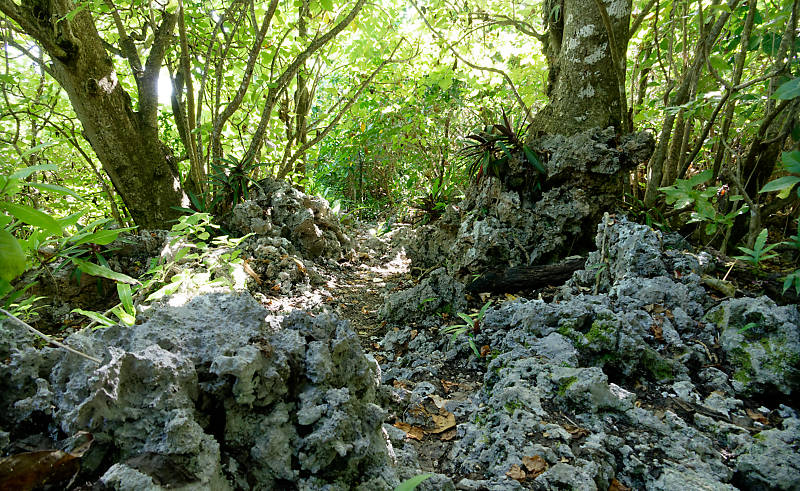
The path opens up to a cave entrance, and going through the cave brings you to the an opening looking out over the reef.
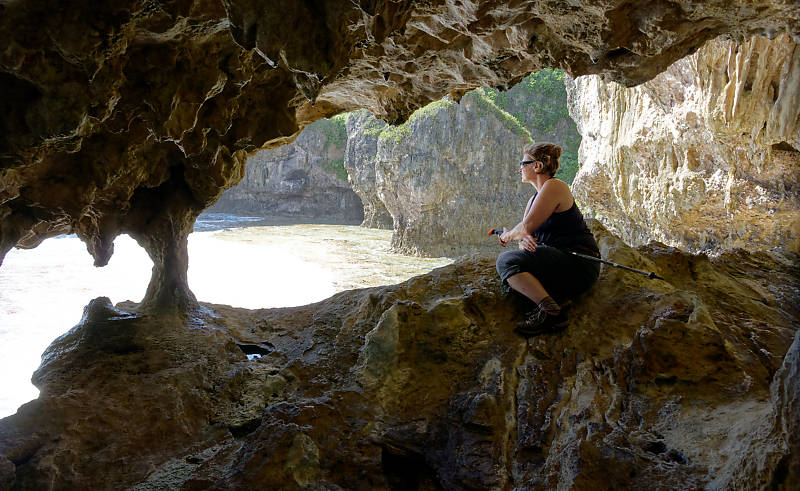
Looking out another direction shows the ocean.
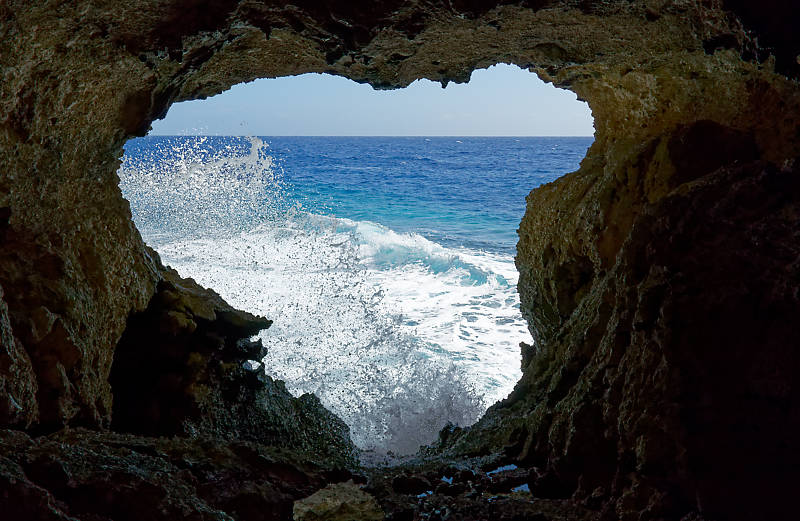
And the arch itself is quite impressive, and can be walked to during low tide. The first day we visited, we missed low tide by a few hours so weren’t able to walk to the base of the arch. So we came back on another day.

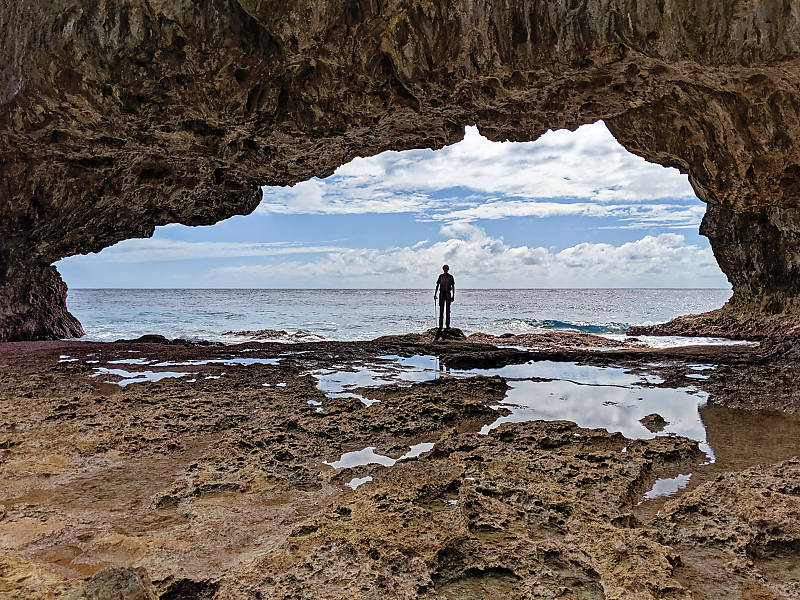
The reefs can be explored for tidal life, although we saw a much greater variety of sea life snorkeling. We did see a lot of sea cucumbers, both in the tidal pools and snorkeling.
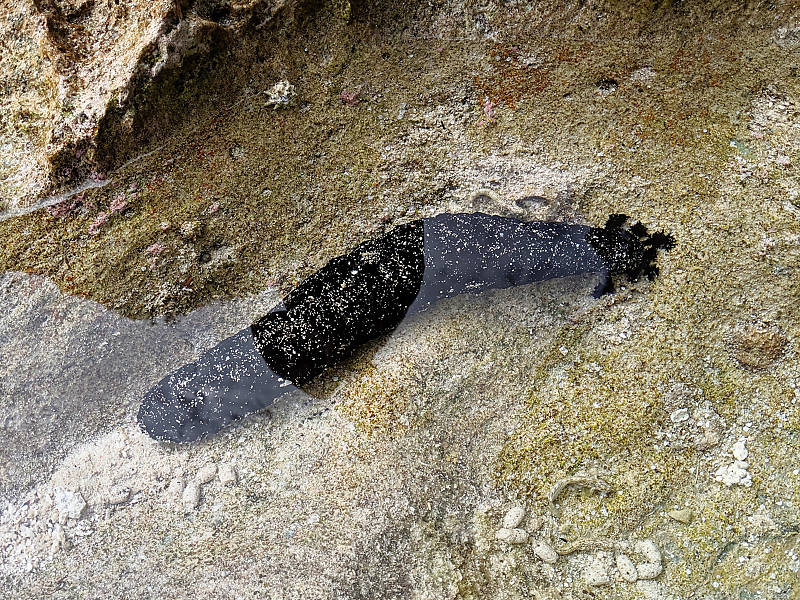
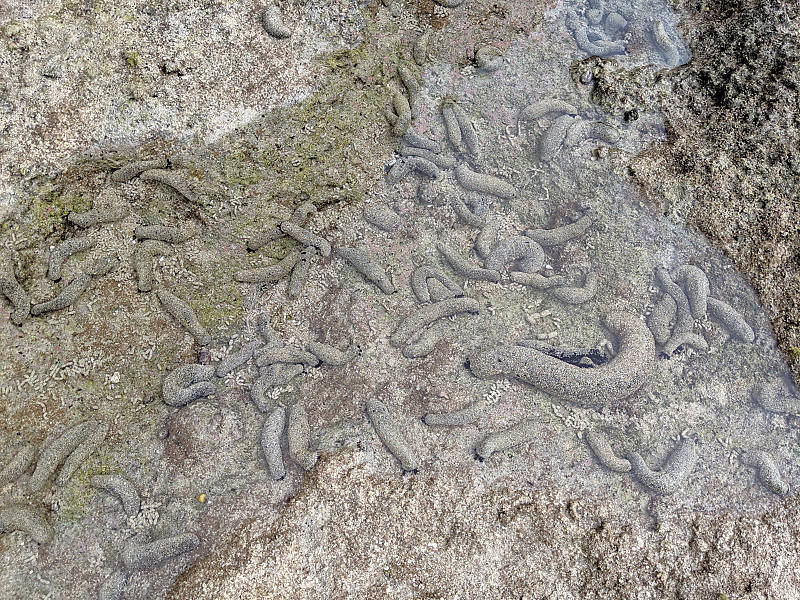
We needed to keep an eye on the tides, as certain spots were only suitable for snorkeling at a low or middle tide, even though the total height change was only 3 feet (1 m). Another interesting thing we ran into is that fresh water drains off the island, and floats on the tidal pools. This creates a boundary layer, making visibility very poor in some areas while snorkeling. Things can be crystal clear, then the next minute everything is fuzzy. When the water is clear, though, the visibility is superb.
We did some walking around our houses, although didn’t go too far given the temperatures. Not as many birds as we expected, but lots of flowers. Ran into something that looks like a miniature poinsettia, with the plant leaves “colored” to look like flowers.
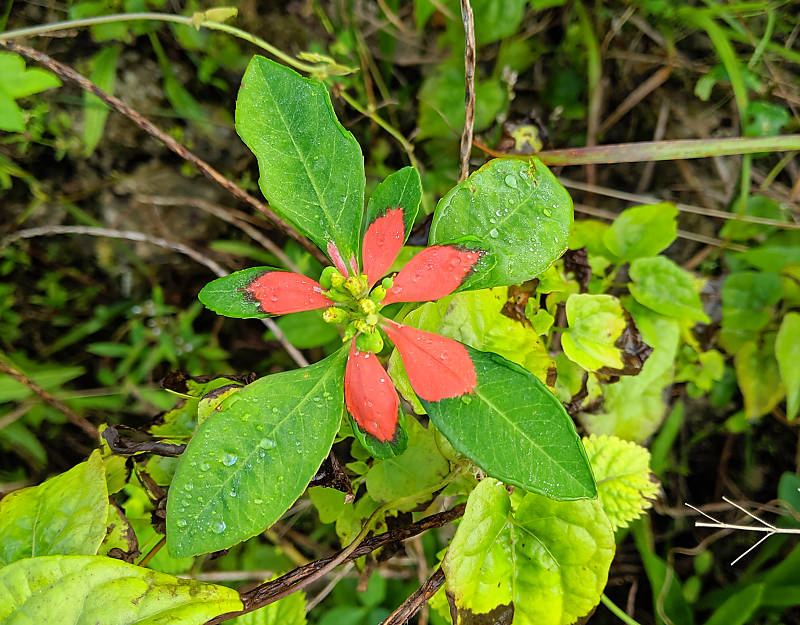
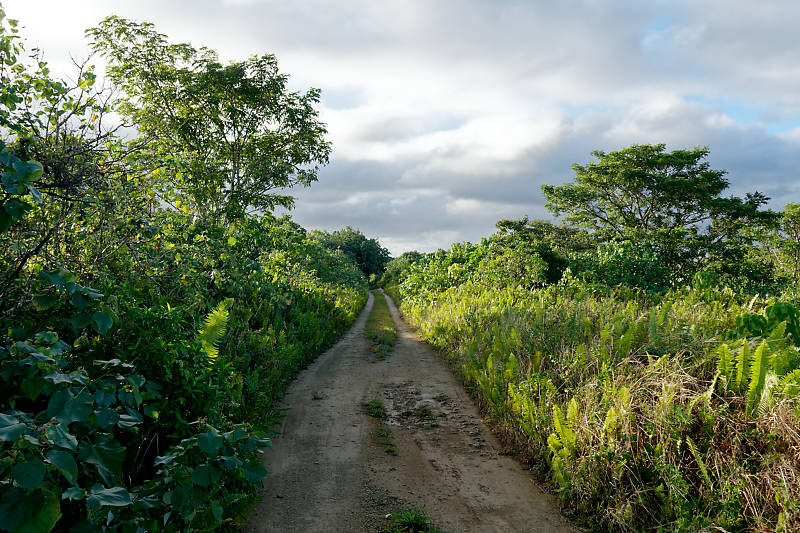
We rented snorkel fins one day from one of the two dive shops on the island, and snorkeled from Robert’s wharf. This is where they unload the cargo ship when it arrives. The bay is too shallow to bring in the cargo ship, so a small ferry and barge are used to bring in the shipping containers. Snorkeling here is out in the main ocean, so it was nice to have the added control of fins. Snorkeling isn’t allowed when cargo is being unloaded, but the cargo ship arrived about a week after we were snorkeling there.
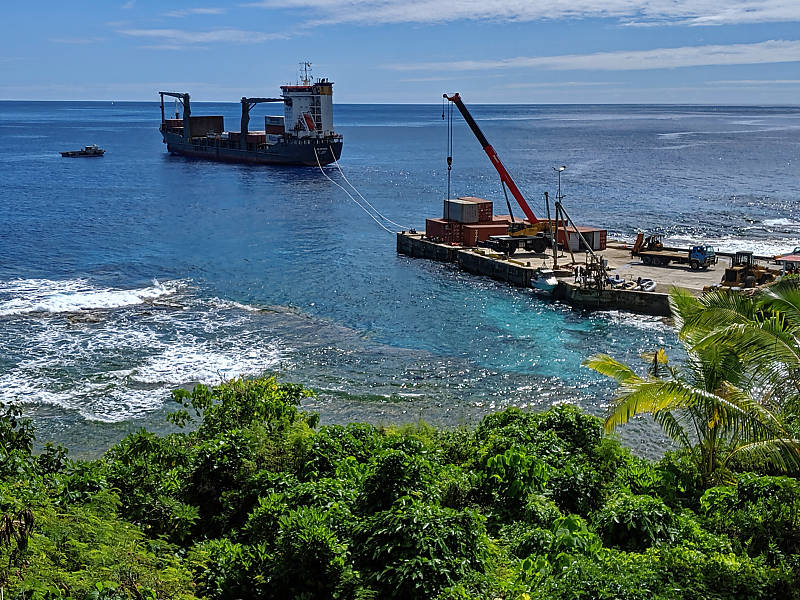
One day we were able to attend a local festival, one of the biggest of the year. They had food stands with a variety of root vegetables for sale, as well as fresh Uga crabs “on the hoof”.
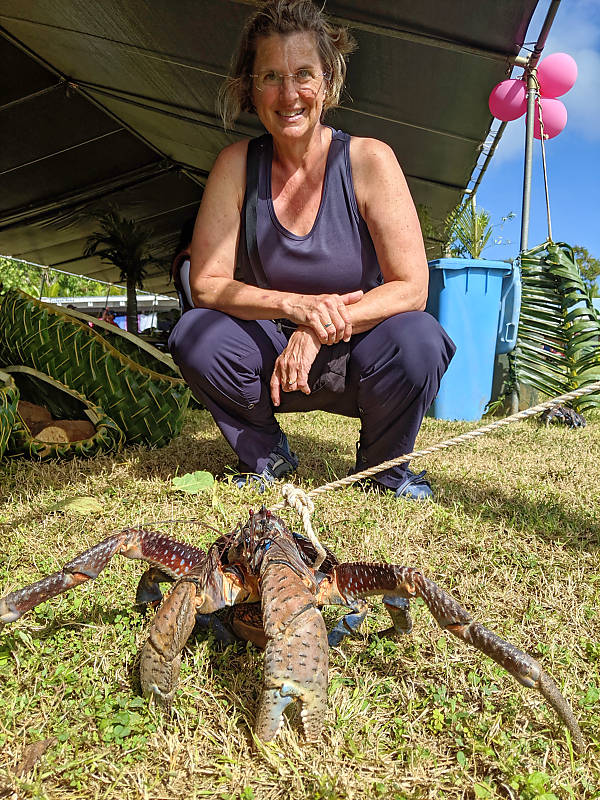
The local children performed their native songs, while enterprising locals set up a variety of games of chance. Things like impromptu putting contests, where putting a golf ball into a circle drawn on the grass wins a bottle of rum. But we mostly enjoyed the performances.
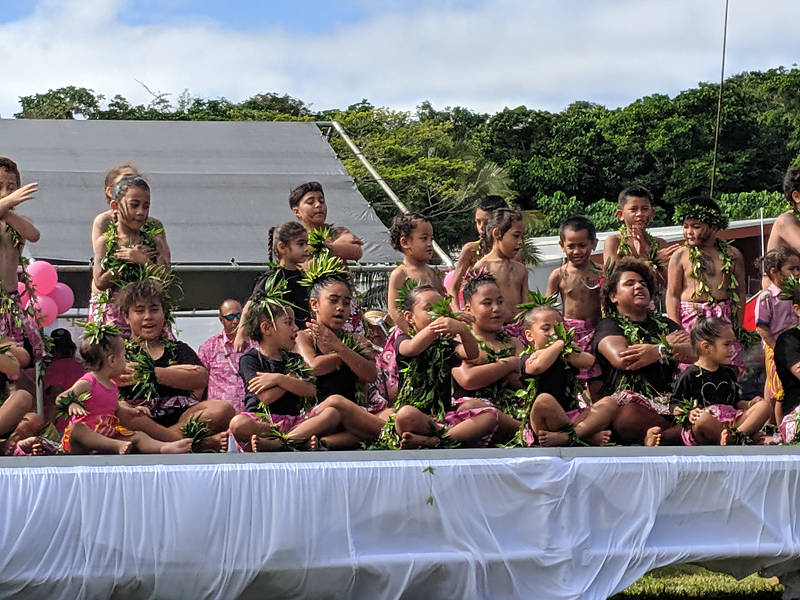
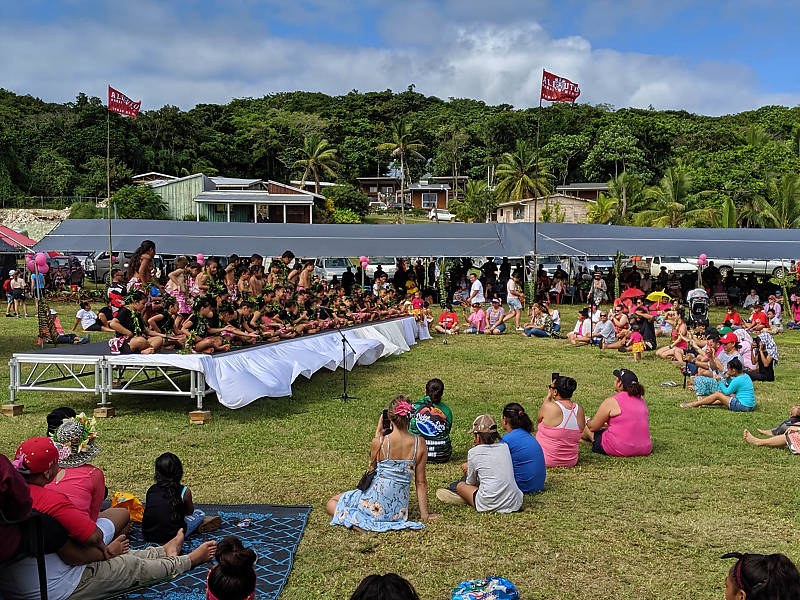
On one of snorkeling days we ran into the formerly mentioned sea snakes for the first time. It’s a little eerie seeing them gliding quickly through the water, even more so when they are coming right towards you. But, as we had been told, they didn’t bother us. Tim also ran across a large Moray eel, roughly 12 inches (30 cm) in diameter. Not sure about the length, as he was coming out of his little cave as I approached, and I only saw the first 5 feet (1.5m) of him. He was moving toward me with mouth open, as the ocean swell was pushing me towards him and I was trying to swim backwards. Fortunately, he was more curious than anything, and we both left each other alone. I found out later that they don’t bother people unless provoked.
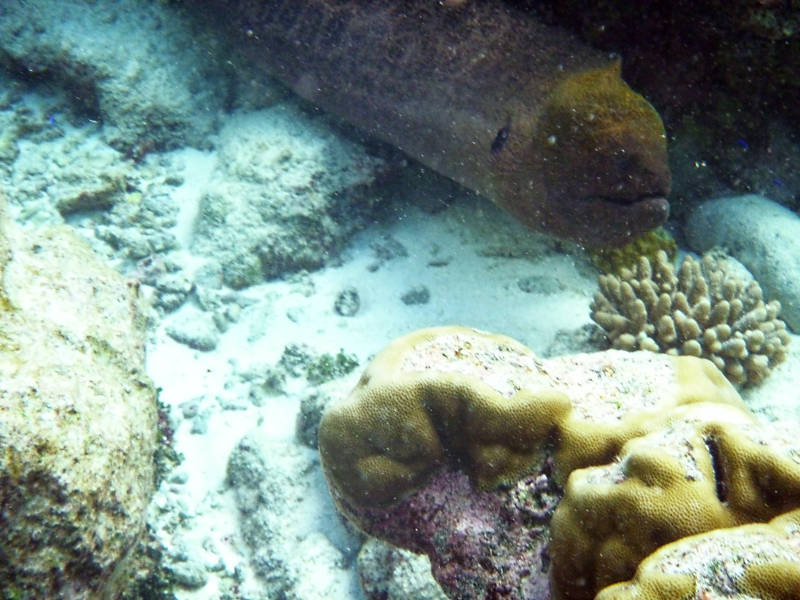
Also ran into a few of the brightly gilled clams, these seemed to come in either royal blue or purple varieties. They were about 6 inches (150mm) across. Deb loved those blue lips!
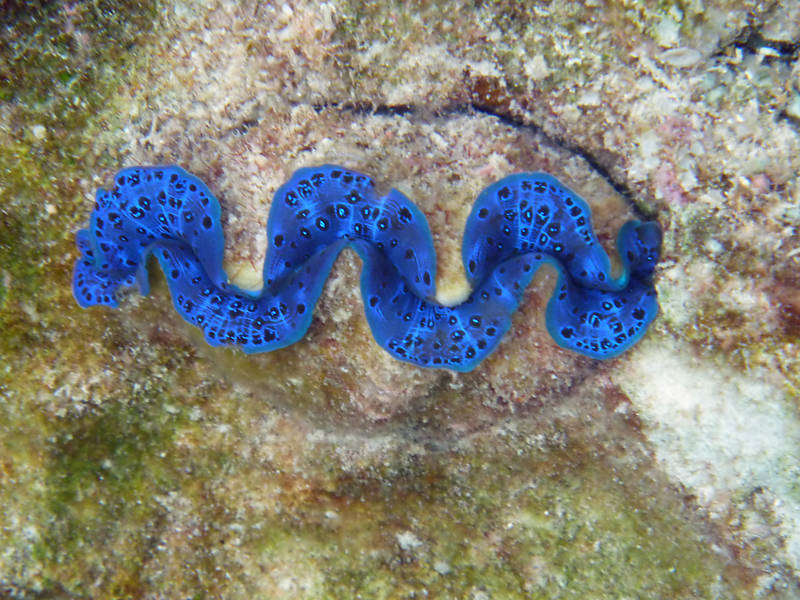
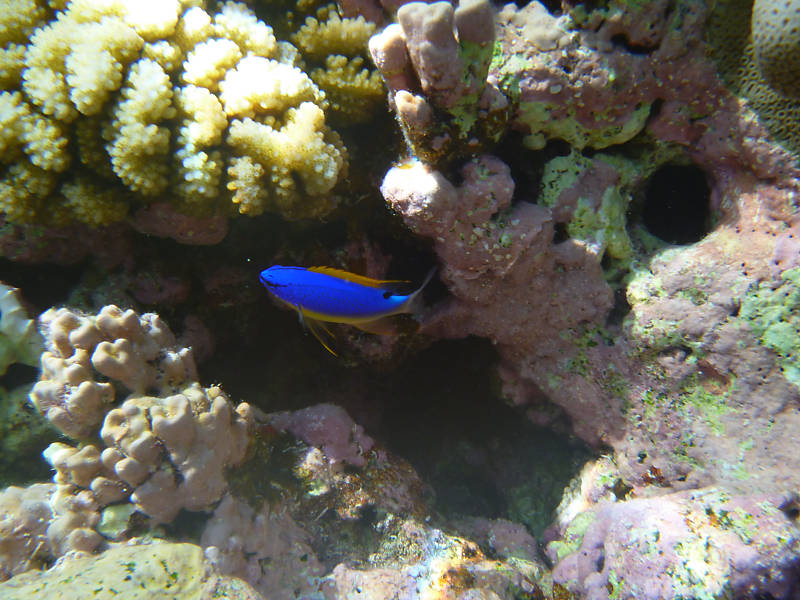

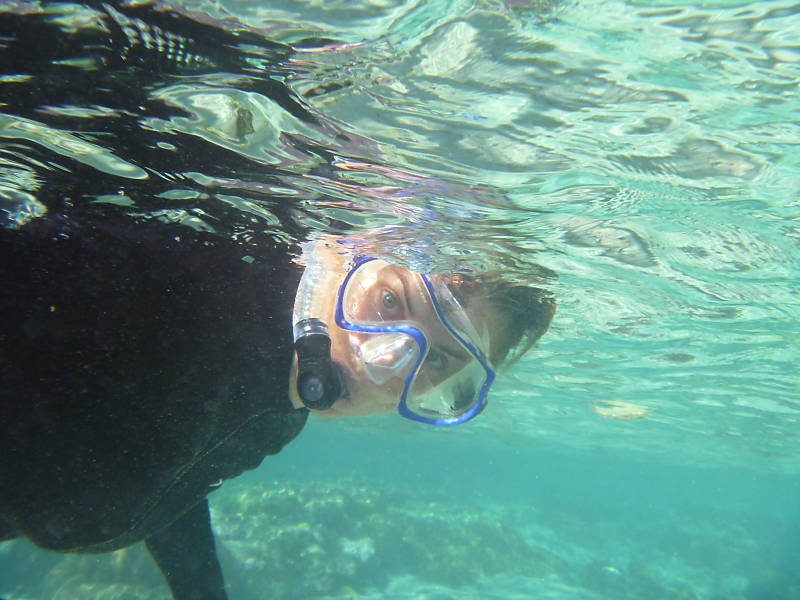
Deb looking calm and relaxed. (No sea snakes present)
One day we drove across the island to Togo Chasm, a dry chasm filled with sand and palm trees. The East side of the island generally isn’t good for snorkeling, as the waves are rougher on this side. But Togo Chasm was fun to explore, and we sat on the cliff watching the waves crash against a natural stone bride as we had lunch. The terrain is very interesting, as the limestone/coral has been carved into pinnacles by the rain over the eons.

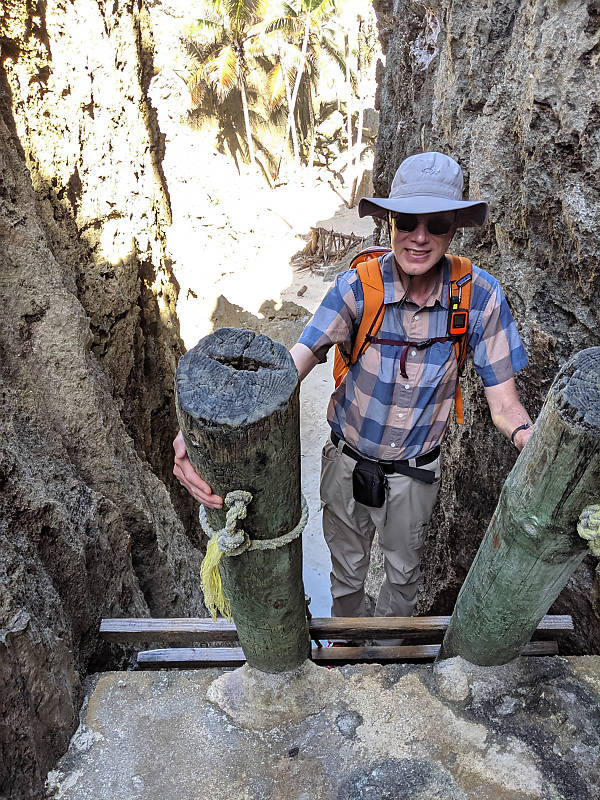
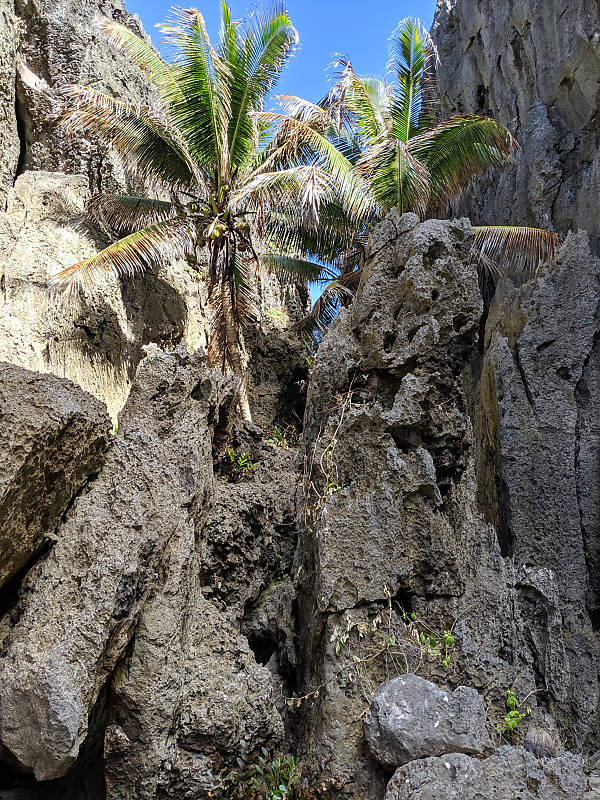
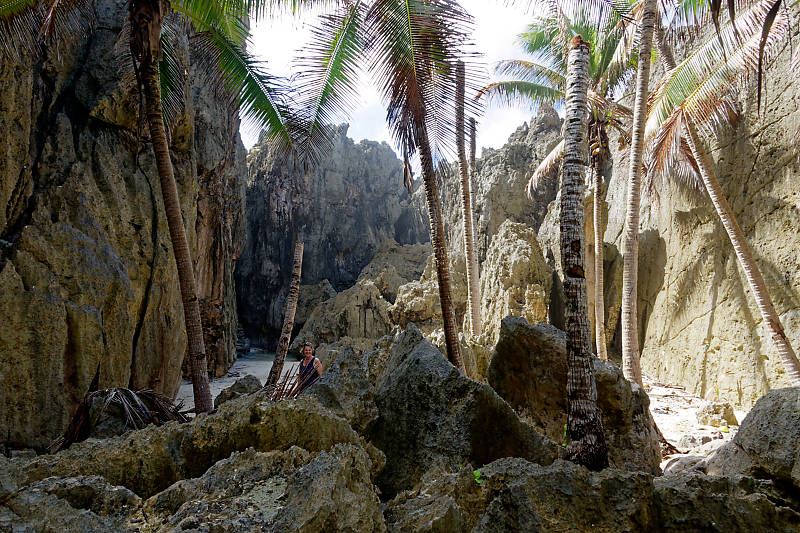
Also on the East side of the island is Anapala Chasm, originally the main source of fresh water on the island. The island is so porous, there are no lakes or rivers. But rainwater would collect at the bottom of this chasm. These days, most of the water comes from the rain collected off the metal roofs. So it’s possible to swim in the Anapala Chasm, although it’s not as scenic as other swimming locations.
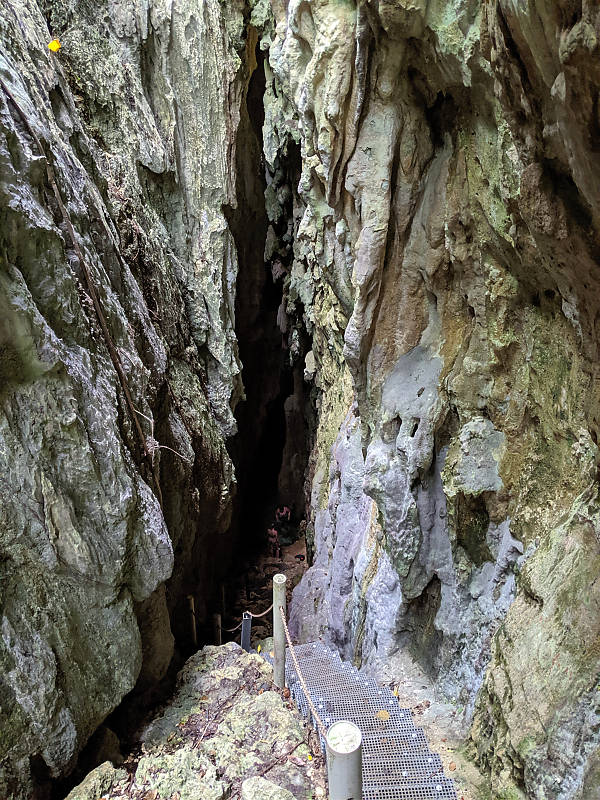
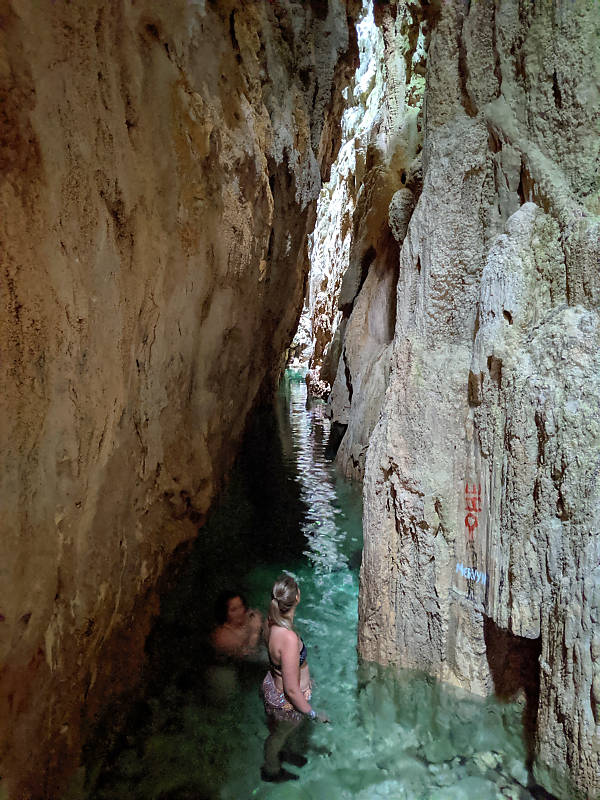
Our second two weeks we stayed in a different house, with even more chickens. We could hear as many as 30 or 40 roosters crowing at one time. That’s one thing we won’t miss about the island. A meeting of the chicken cluster on the porch. About half of them had run off by the time I got the camera out.
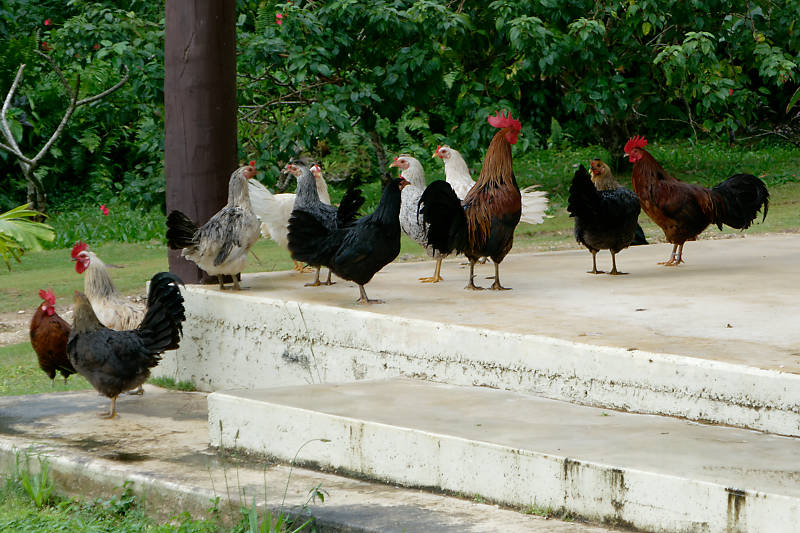
One thing we had hoped to do on Niue was to go on a whale watching trip. Niue is one of the few places that lets you snorkel with the whales, and if whales aren’t around then you usually get to snorkel with dolphins instead. Unfortunately, weather forced a cancellation of our trip and it was too late to re-schedule. We were right at the start of the whale season, so had tried to book our trip towards the end of our month there.
Deb did manage to do her re-certification for scuba diving, as it had been 5 years since our time on the great barrier reef. Tim has decided to not scuba dive any more, as the middle ear problems that I ran into in Australia could result in permanent hearing loss. So Deb will have to go it alone from now on.
And, as our time in Niue draws to a close, a few last photographs. On to Kuala Lumpur!
